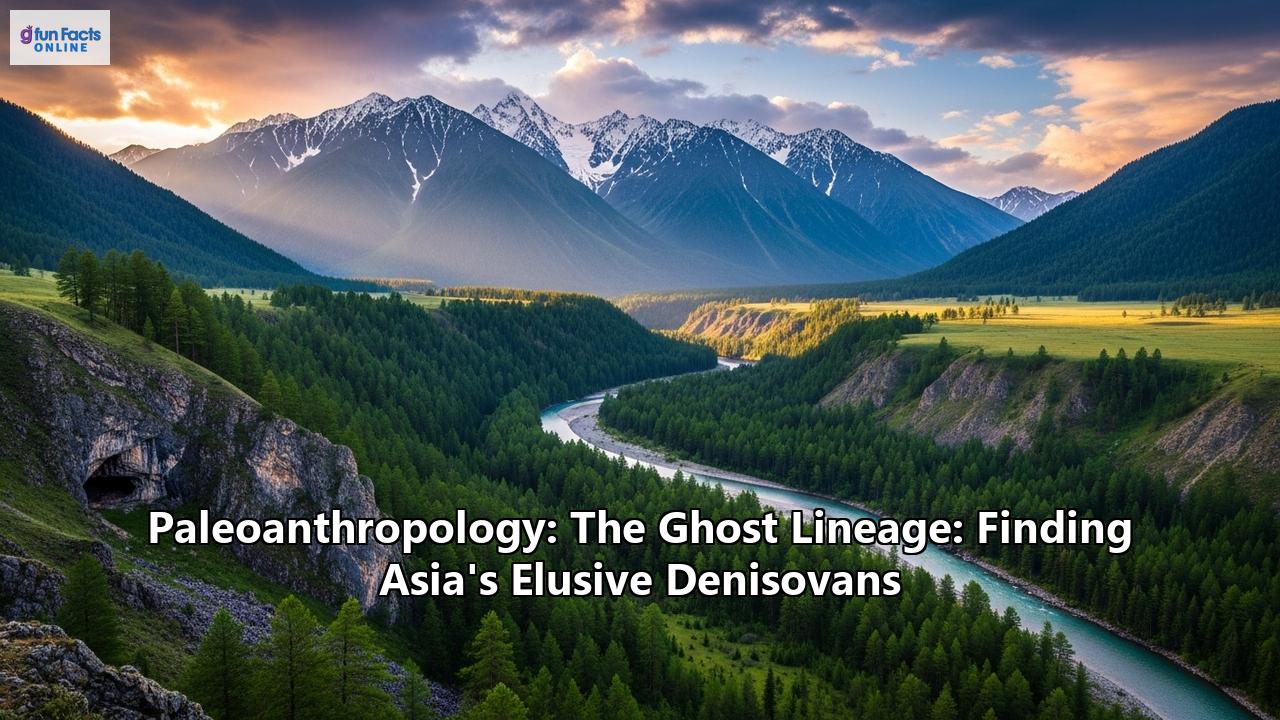In the grand narrative of human evolution, a shadowy figure has emerged from the depths of time, a ghost in our ancestral lineage whose presence is felt more through whispers in our DNA than through a wealth of physical remains. These are the Denisovans, a mysterious group of archaic humans who roamed the vast continent of Asia for hundreds of thousands of years. Their story is not one of dusty bones in a museum drawer but a cutting-edge scientific detective story, pieced together from fragmentary fossils and the revolutionary field of paleogenetics.
A Whisper from a Siberian Cave
For a long time, the story of ancient humans outside of Africa was dominated by the Neanderthals of Europe and Western Asia. But in 2008, a discovery in a remote cave in the Altai Mountains of Siberia began to change everything. From the floor of Denisova Cave, archaeologists unearthed a tiny fragment of a finger bone from a young girl. What was remarkable was not the bone itself, but the secrets it held within.
Scientists at the Max Planck Institute for Evolutionary Anthropology in Germany managed to extract and sequence the DNA from this minuscule specimen. The results were astounding. The genetic code did not match that of modern humans or Neanderthals. It belonged to a previously unknown lineage of hominins. For the first time, a new group of extinct humans was discovered not through the painstaking analysis of fossil anatomy, but by reading their genetic blueprint. These enigmatic people were named Denisovans, after the cave where their first traces were found.
The Genetic Ghost: Piecing Together an Identity
Since that initial discovery, a few more fossil fragments from Denisova Cave have been identified as Denisovan, including several large molars and a piece of a skull. These scant remains offer tantalizing clues about their physical appearance. The molars, for instance, are much larger and more robust than those of Neanderthals or Homo sapiens, harking back to more ancient hominins like the australopithecines. DNA analysis has even allowed for a speculative reconstruction of their features, suggesting they likely had dark skin, brown hair, and brown eyes.
Despite the scarcity of their bones, their genetic legacy speaks volumes. The most startling revelation is that Denisovans interbred with our own ancestors. The genomes of modern human populations, particularly those in Melanesia, Papua New Guinea, and Aboriginal Australia, contain a significant amount of Denisovan DNA, with some individuals carrying up to 6% of this ancient ancestry. This genetic footprint tells us that the Denisovans were not a small, isolated group but a widespread and successful population that ranged across the diverse landscapes of Asia.
From the Roof of the World to Tropical Jungles
The search for Denisovans outside of Siberia has been a slow but rewarding process. A major breakthrough came from the Tibetan Plateau, where a robust mandible, discovered in Baishiya Karst Cave, was identified as Denisovan through the analysis of ancient proteins. This placed the Denisovans in a high-altitude, low-oxygen environment and helped to explain a long-standing mystery: a gene that helps modern Tibetans survive at high altitudes is now understood to be a gift from their Denisovan ancestors.
More recently, the discovery of a Denisovan tooth in a cave in Laos has extended their known range into the tropical forests of Southeast Asia. This finding demonstrates their remarkable adaptability, thriving in environments from the frigid steppes of Siberia to the humid tropics. It also reinforces the idea that as modern humans migrated through Asia, they would have encountered these archaic people.
A Complex Family Tree
The world of our ancient ancestors was a place of surprising diversity and interaction. Genetic analysis has revealed a complex web of relationships between different hominin groups. In Denisova Cave itself, evidence of cohabitation and interbreeding with Neanderthals has been found. The most famous example is "Denny," the fossil of a girl who had a Neanderthal mother and a Denisovan father, a direct snapshot of inter-species mingling. The genome of the Denisovans from this cave also shows that about 17% of their DNA came from the local Neanderthal population.
The Denisovan story became even more complex with the discovery that their own genome contains fragments of DNA from a "super-archaic" and as-yet-unknown hominin group that diverged from the human line over a million years ago. This suggests a deep history of different human-like groups living, and interbreeding, across the Old World.
The Search Continues
The Denisovans remain one of the most enigmatic chapters in the human story. They are a "ghost lineage," a population known primarily through the genetic echoes they have left behind in modern humans. Paleoanthropologists are now engaged in a fascinating quest to put a face to this name, re-examining existing fossil finds from across Asia to see if they might belong to this elusive group. Skulls and other bones from sites in China, with their unique mosaic of archaic and modern features, are prime candidates.
The story of the Denisovans is a powerful reminder that our evolutionary past was not a simple, linear progression, but a tangled and diverse tree of interacting species. As new technologies allow us to extract ever more information from fragmentary remains and the very earth of the caves they inhabited, the ghost lineage of the Denisovans is slowly coming into focus, revealing a richer and more complex story of what it means to be human.
Reference:
- https://en.wikipedia.org/wiki/Denisovan
- https://ph.kku.ac.th/eng/images/file/journal-club/37.Denisovan.pdf
- https://australian.museum/about/organisation/media-centre/new-evidence-denisovans/
- http://www.bcas.cas.cn/perspective/202504/t20250429_1042325.html
- https://www.paleoanthropology.org/ojs/index.php/paleo/libraryFiles/downloadPublic/29

